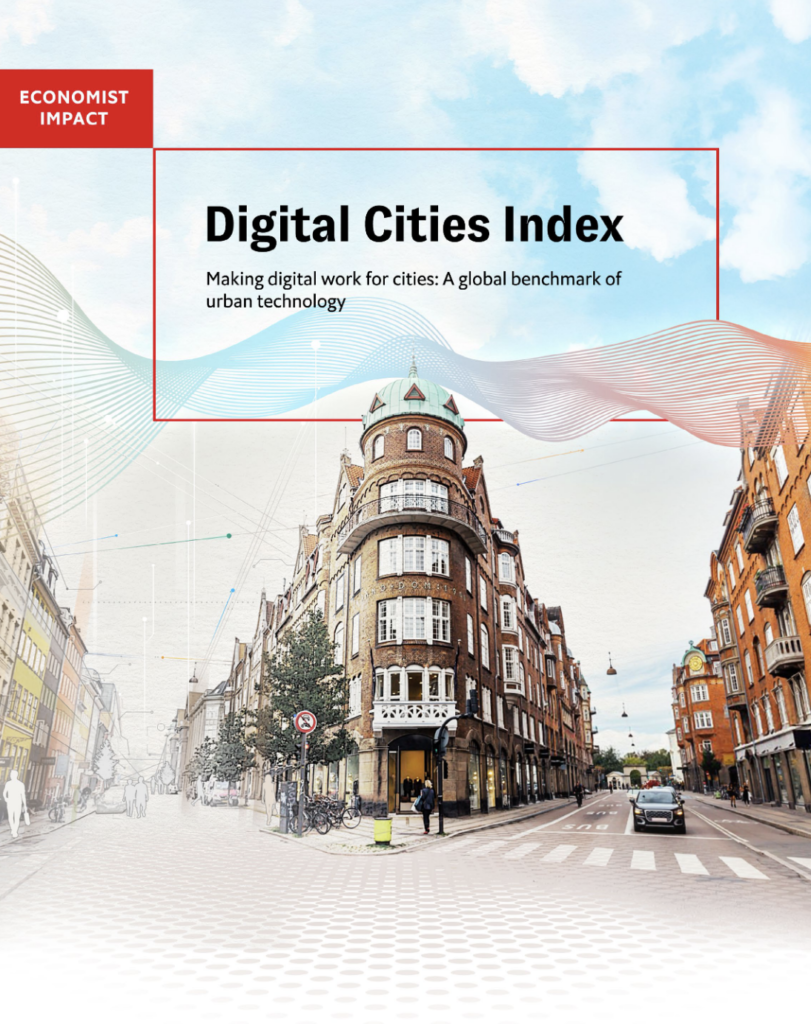
The Digital Cities Index 2022, published by The Economist “combines highlights from the DCI with expert commentary on the key factors determining success in the utilisation of digital technology in today’s cities, and uses the rankings to benchmark performance and identify the leading cities and the best practices that got them there.”
We were delighted to weigh in on this global assessment of the state of smart cities. Read some our insights below, and download the full white paper.
To counter the threat of top-down digital technology imposition, cities are realising they need to engage with all their constituents. Anthony Townsend, Urbanist in Residence at Cornell Tech’s Jacobs Urban Tech Hub, speaks about a shift from “optimisation to
Digital Cities Index 2022, The Economist Group
engagement” in which the first generation of smart city approaches led by the likes of IBM, Cisco and Siemens focused on top-down, efficiency-oriented applications, and has been superseded by a more democratic approach that recognises diverse perspectives and needs.
“As the ‘body public’ of various countries have digested the idea of smart cities, as the technology has evolved, and as the energy has shifted from enterprise to consumer tech companies, there’s been a lot of conflict around cultural and political assumptions about privacy and governance, what government does, what the private sector does. The response from a lot of cities has been to be much more deliberate about engagement, around identifying problems that technology could be used for, involving people in design evaluation, and being more aggressive about identifying risks ahead of time.” Many cities are now laying out the risks of AI and automated decision-making, for example, explains Mr Townsend.
Anthony Townsend also notes the trade-offs between incrementalism and large-scale smart city initiatives. He is sceptical about greenfield smart city initiatives like Sidewalk Toronto and Songdo in South Korea, both of which have failed to attract residents or achieve their goals. “Where we’ve seen missteps has been where private sector companies have moved too slowly, at a scale that wasn’t keeping up with shifts in the tech marketplace in terms of tech behaviour and, more often than not, that has happened because they’ve anchored a smart city urban tech project in a big real estate development.”
He highlights Sidewalk and Songdo as examples of initiatives that were technologically “frozen in an earlier era”. The challenge is “coupling the physical building of the city with your digital [version], so that the two can move at a similar pace, and thus ensure the digital layer doesn’t get frozen and become obsolete before your physical layer is ready to open its doors. Then comes the political reality of large-scale smart cities wrapped in high-tech which are being rejected all over the place.”
Instead, Mr Townsend believes that “incremental projects of 100 or 1,000 units rather than 10,000 is where we’re going to see the private sector figure out how to do this”. He considers that opportunities to deliver results lie in a smaller-scale, distributed fashion, cutting across network infrastructure, from cloud infrastructure to energy systems to mobility to construction. He cites the promising “scattered site” developments in Scandinavia and the Netherlands, like smart districts and communities.





